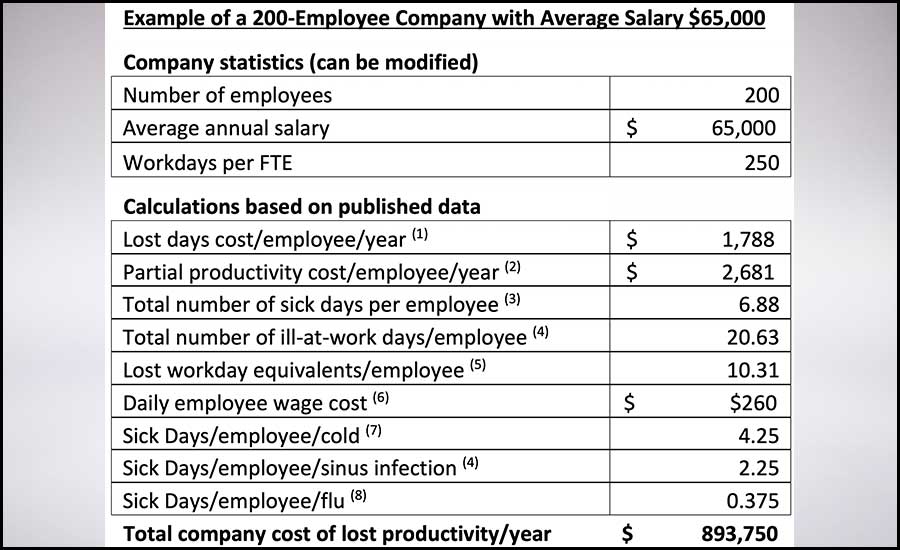Put your Office Air to Work


Image courtesy of Austin Distel
Last month, I explored the academic and financial benefits of improving IAQ in K–12 schools. Let’s now look at the profitability of supporting the health of employees in commercial real estate buildings. Commercial building owners strive to maximize profits from their real estate investments by attracting long-term tenants with successful businesses. Beautiful exterior facades; elegant interior designs; convenient parking facilities; and amenities, such as fitness centers, will appeal to business owners who want to retain employees and attract customers. When combined with energy-conserving mechanical systems and a low-maintenance building infrastructure, the commercial real estate business can be extremely profitable. This cost-benefit model works beautifully until the tenant closes its doors because of financial hardship.Over the last 18 months, businesses that depend on customers or on-site employees have suffered during COVID-19 shutdowns and strict occupancy limits, too often resulting in business closures and non-renewed leases. Another more insidious erosion of business profits, one that preceded the pandemic and will continue unless explicitly addressed, is loss of employee productivity from illness-related absenteeism and presenteeism (coming to work while sick).

Table 1: How common illnesses impact a business’ bottom line.
Employee salaries and benefits account for approximately 90% of a business’s operating costs; therefore, even small changes in staff productivity can have a large impact. Putting actual numbers to the costs of employee absenteeism and presenteeism from common respiratory illnesses and, conversely, the value of healthy and productive employees is startling.Table 1 shows how employees sick with the flu, common cold, or sinusitis can affect the bottom line of a business and the savings from a 10% reductions in these illnesses.On a national scale, the total cost of presenteeism in the U.S. in 2015 was calculated to be more than $150 billion per year, with the flu alone causing $10 billion in lost productivity.Sick employees who persist in coming to work are less productive, take longer to recover, and, depending on the cause of their illnesses, run the risk of transmitting the infectious viruses or bacteria to their coworkers. In the U.S., for every dollar spent on health care benefits, another 61 cents is spent on illness-related absences and reduced work output.
There Is Hope
While these numbers are staggering, there are clear actions building and business owners can take to reduce the financial burden of respiratory infections. The viruses and bacteria responsible for these illnesses are usually spread through the air in droplets, a transmission route that can be significantly decreased by proper management of indoor environments. In fact, a large database shows productivity improvements of 8%-11% can be achieved with improved IAQ; revealing one more setting where building professionals are key to protecting public health and promoting a robust economy. Managing the indoor environment to support the health of building users is clearly profitable for business owners and their employees.
References:
1. https://www.cdc.gov/features/rhinoviruses/index.html
2. https://www.statista.com/statistics/247780/percentage-of-us-respondentssick-with-a-cold-or-a-flu-2008-2012/
3. Graham Worrall, MB BS MSc FCFP. 2011. Acute sinusitis. Can Fam Physician. May; 57(5): 565–567.
4. Harvard Health Publishing, Sinus infections, March 2016.
5. https://www.cdc.gov/flu/takingcare.html.
6. Molinari NA, Ortega-Sanchez IR, Messonnier ML, Thompson WW, Wortley PM, Weintraub E, Bridges CB. The annual impact of seasonal influenza in the US: measuring disease burden and costs. Vaccine. 2007;25(27):5086–96.
7. Palmer LA, Rousculp MD, Johnston SS, Mahadevia PJ, Nichol KL. Vaccine. 2010 Effect of influenza-like illness and other wintertime respiratory illnesses on worker productivity: The child and household influenza-illness and employee function (CHIEF) study. Jul 12;28(31).
8. Kelly A. Reynolds, Paloma I. Beamer, Kevin R. Plotkin, Laura Y. Sifuentes , David W. Koenig, and Charles P. Gerba, The Healthy Workplace Project: Reduced Viral Exposure in an Office Setting. Arch Environ Occup Health. 2016 May 3; 71(3): 157–162.

Dr. Stephanie Taylor is the president and founder of Building4Health Inc. After working as a physician for many decades, Dr. Taylor obtained a Masters in Architecture as well as Infection Control certification. Her lifelong commitment to patient care includes focusing on improving the healthcare physical environment and clinical work processes to help patients heal quickly and save hospitals valuable dollars. Dr. Taylor is a graduate of Harvard Medical School (MD), and Norwich University (Masters Architecture). She has numerous research publications in Nature, Science, and other peer-reviewed journals. She can be contacted at stephanie@b4hinc.com or (860) 501-8950.
-
